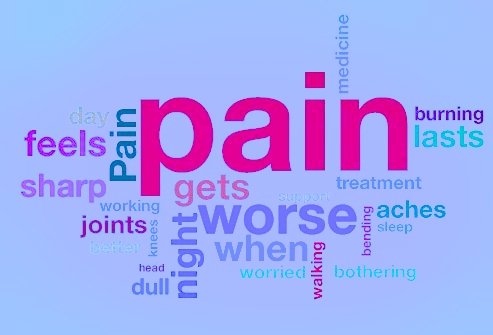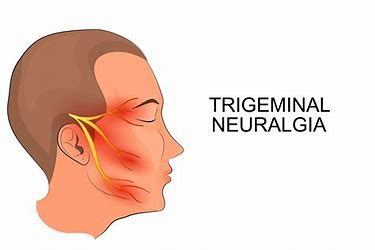Let’s Talk About Neuralgia
According to Wikipedia, Neuralgia is a pain in the distribution of a nerve or nerves. It is often related to a sharp type of pain that is associated with nerves and can range from the intensity of mild to severe. Neuralgia is not an illness in its own right but a symptom of injury or a particular disorder. It does happen that in many cases that cause of the pain is not known. Older people are most susceptible but anyone of any age can be affected. It is normal that almost everyone can experience mild neuralgia at some point and it can be usually temporary. It can be easy to tend it by themselves within a few days. However, there are some types of neuralgia that last longer and these can be agonizing that it can severely reduce a person’s quality of life. There are different types of neuralgia and we are going to discuss more about these, but first let’s talk more the symptoms of neuralgia.

Symptoms of Neuralgia
The symptoms of neuralgia can include:
- localized pain
- increased sensitivity of the skin along the path of the damaged nerve, any touch or pressure is felt as pain
- pain along the path of the nerve that is sharp or stabbing like
- weakness or complete paralysis of muscles that the nerve supplies
- the affected area is still functional and the muscles may spasm
Types of Neuralgia
- Central Neuralgia – This type originates in the spinal cord or brain. It can be caused by a primary lesion or dysfunction in the central nervous system and is known as ‘neuropathic pain’.
- Trigeminal Neuralgia – The trigeminal nerve causes an intense facial pain that may be felt like an electric shock sensation or a burning pain. If you have trigeminal neuralgia, even mild stimulation of your face — such as from brushing your teeth or putting on makeup — may trigger a jolt of excruciating pain. Trigeminal neuralgia affects women more often than men, and it’s more likely to occur in people who are older than 50.
- Atypical Neuralgia – Known by an aching and burning in the cheeks, sinuses, forehead, jaws, eye, and temples along with a persistent headache. It can also be felt like an electric shock-like sensation. This type of neuralgia can be felt across the scalp and neck.
- Postherpetic Neuralgia – The herpes varicella virus and the herpes zoster outbreak also known as shingles are the reasons why the postherpetic neuralgia occur. A variable degree of pain can be felt and it can be ranged from mild to severe. It is felt as though a burning or stabbing sensation.
- Occipital Neuralgia – This is a condition in which the nerves that run from the top of the spinal cord up through the scalp are inflamed or injured. It can be felt as a pain in the back of the head or the base of your skull. Sometimes it is confused which migraine or other types of headaches as the symptoms are quite similar. However, the treatments are totally different from each other.
- Glossopharyngeal Neuralgia – This is a rare disorder that causes repeated pain in the tonsil and surrounding areas of the throat and the back of the tongue. It is mostly caused by an injury or damage to a nerve. The pain can occur without any warning or can be triggered by swallowing. The exact cause is not yet found and it can also occur in people with throat or neck cancer.

Causes of Neuralgia
The exact cause of some types of nerve pain has not yet been completely understood, one may feel nerve pain from damage or injury to a nerve or a pressure on a nerve or it can be the changes in the way the nerves function. However, there are some recurrent causes that are similar in most cases, such as:
Infection – Any infection in a specific part of the body can affect a nearby nerve. For example, the cause of postherpetic neuralgia is shingles, an infection caused by the chickenpox virus. With age, there is more chance of having this infection increased.
Multiple sclerosis – A disease caused by the deterioration of myelin, the covering nerves. Trigeminal neuralgia can occur in someone with multiple sclerosis.
Pressure on nerves – It is believed that pressure on the nerves may cause neuralgia and the pressure may come from bone, ligament, blood vessel, tumor. The swollen blood vessel is a common cause of trigeminal neuralgia.
Diabetes – People with diabetes may have problems with their nerves, including neuralgia. The damage is most common in the hands, arms, feet, and legs.
Less common causes – The less common causes are chronic kidney disease, medication prescribed for cancer, fluoroquinolone antibiotics used to treat some infections, trauma from a surgery or chemical irritation.
Treating Neuralgia
Treating neuralgia is not an easy task and treatment. If there is a treatment, it will vary depending on the cause, location, and severity of the pain. Consulting a doctor is recommended, he/she will identify the cause of the nerve problem and work to reverse or control it. The doctor will also likely recommend pain medications to control your symptoms and it includes:
- antidepressant medication
- antiseizure medication
- over-the-counter pain medication, such as aspirin or ibuprofen
- narcotic analgesics for short-term pain
- lidocaine patch
- capsaicin or lidocaine medicated skin creams
Talk to your doctor to discover the source of your pain and find out what treatments may work for you.
If you have any questions or suggestions, do let us know in the comment section below.



